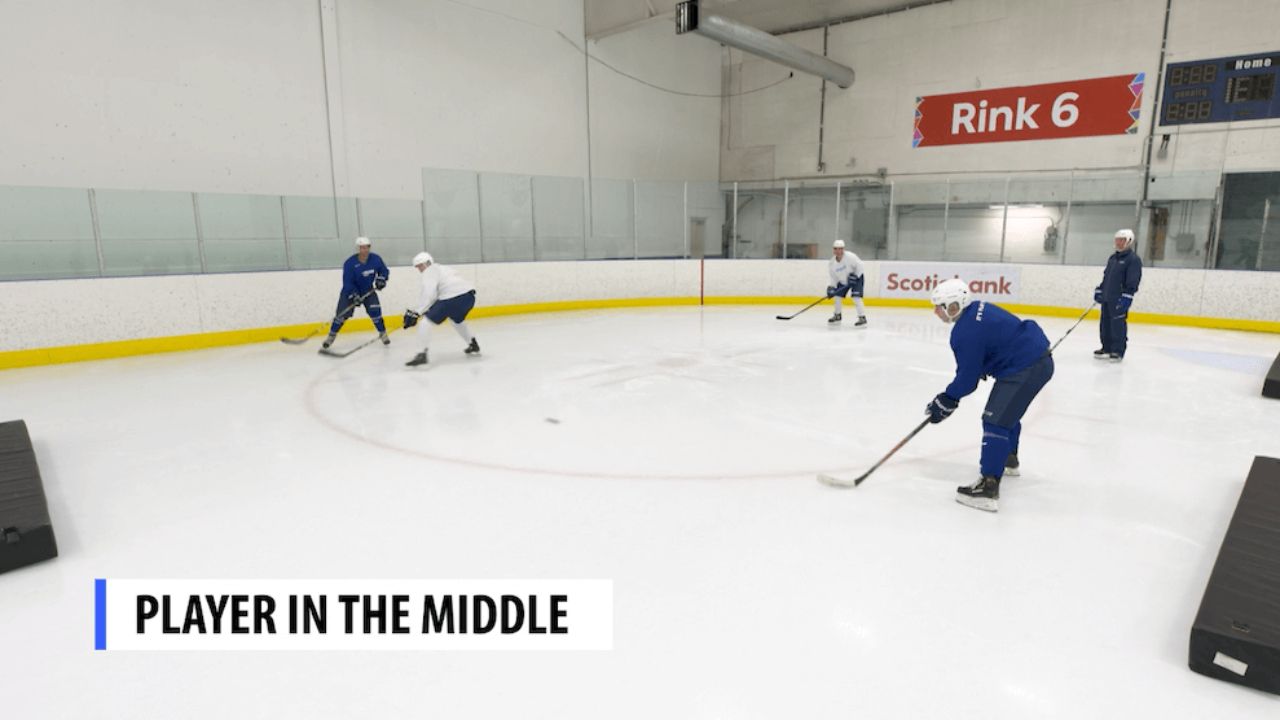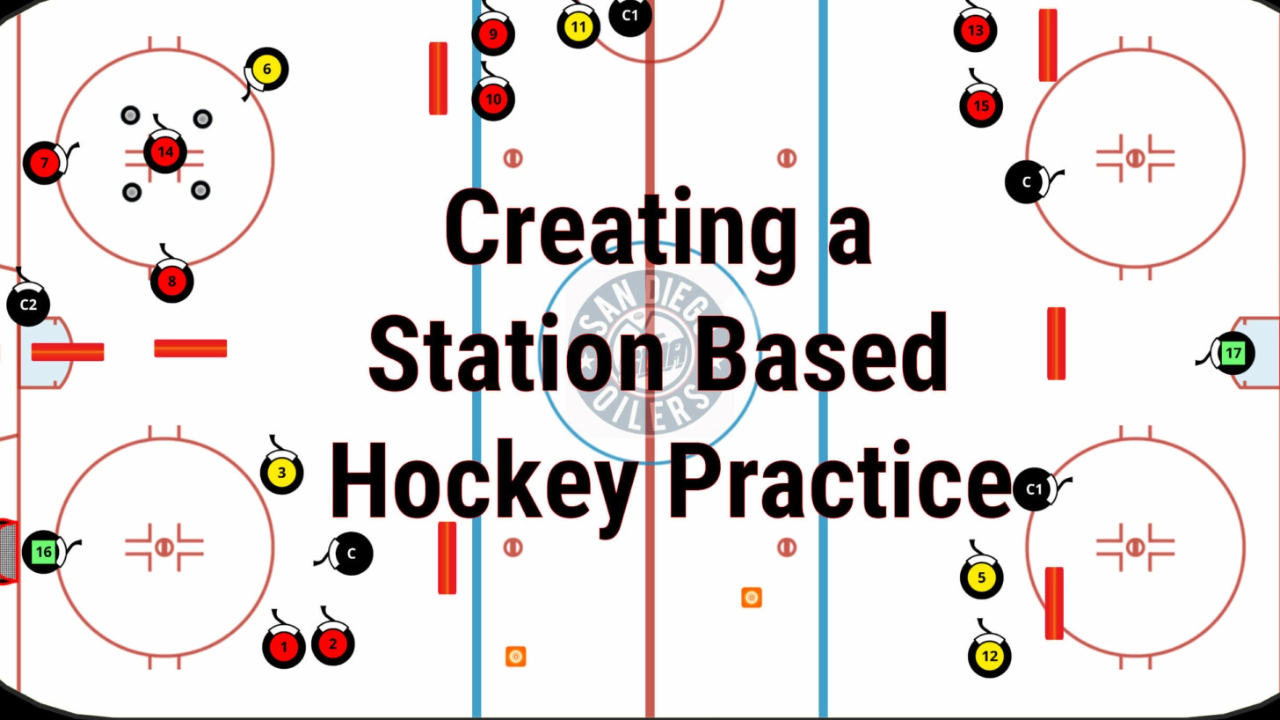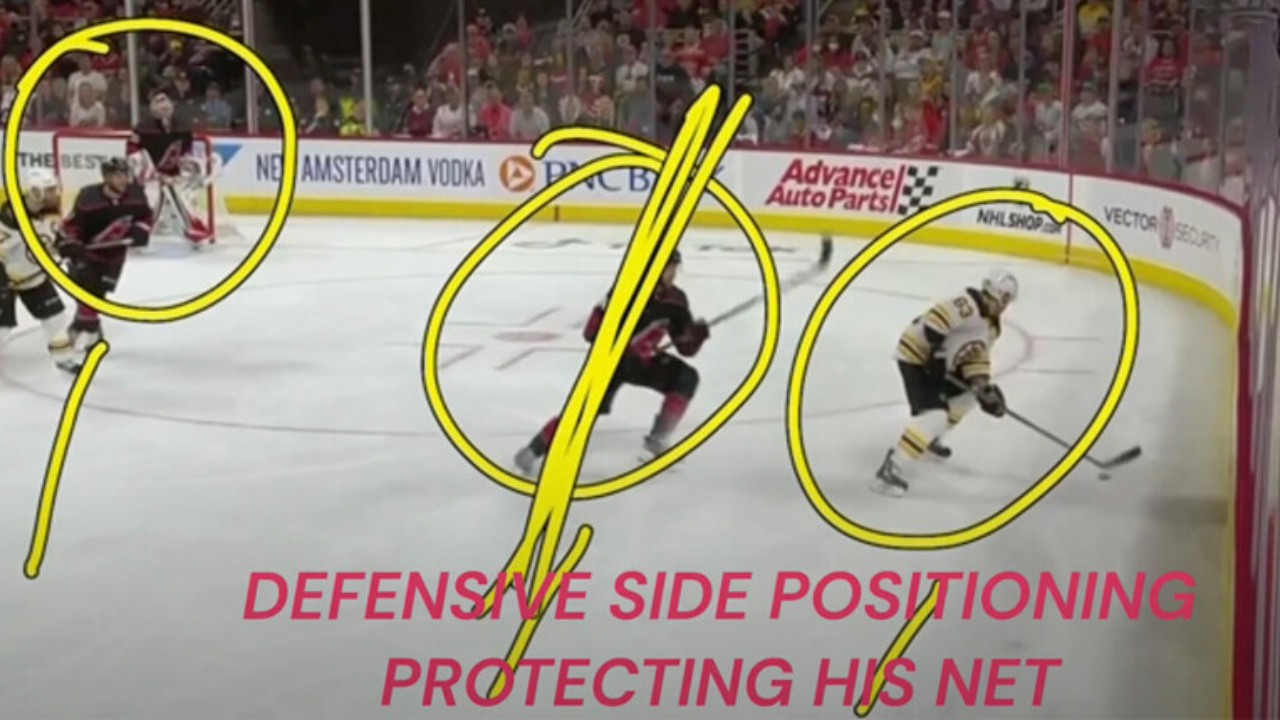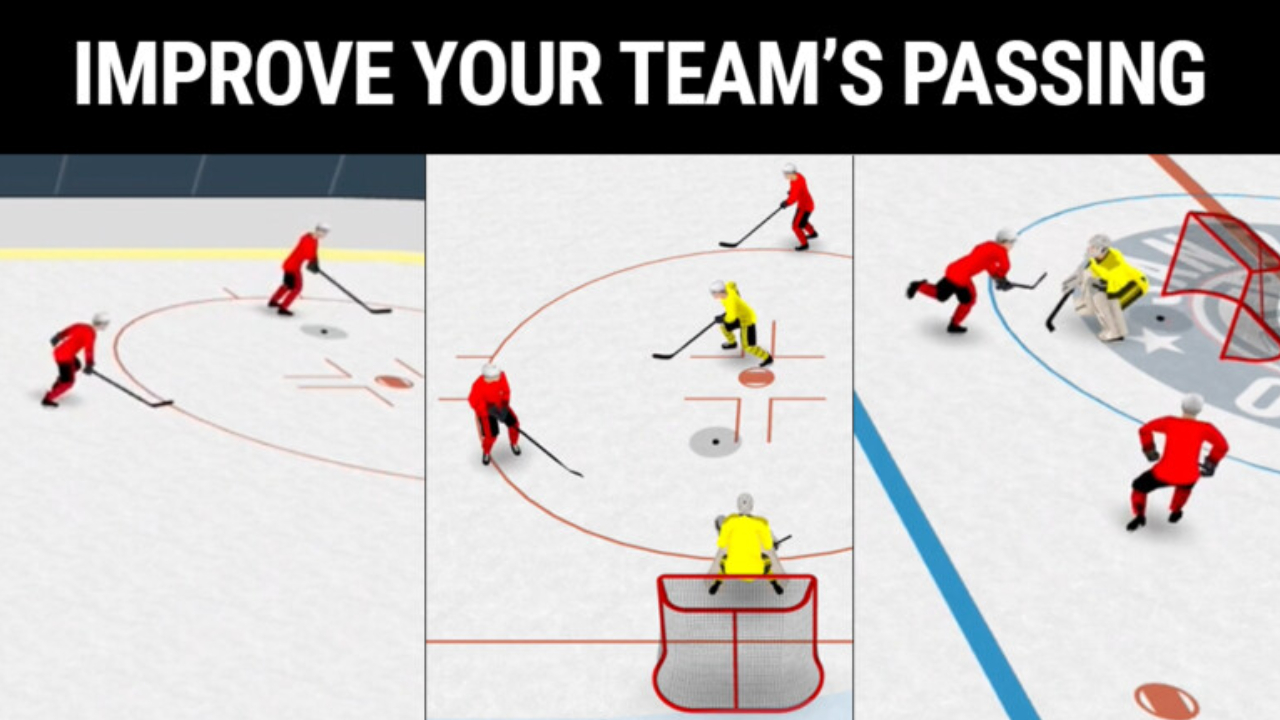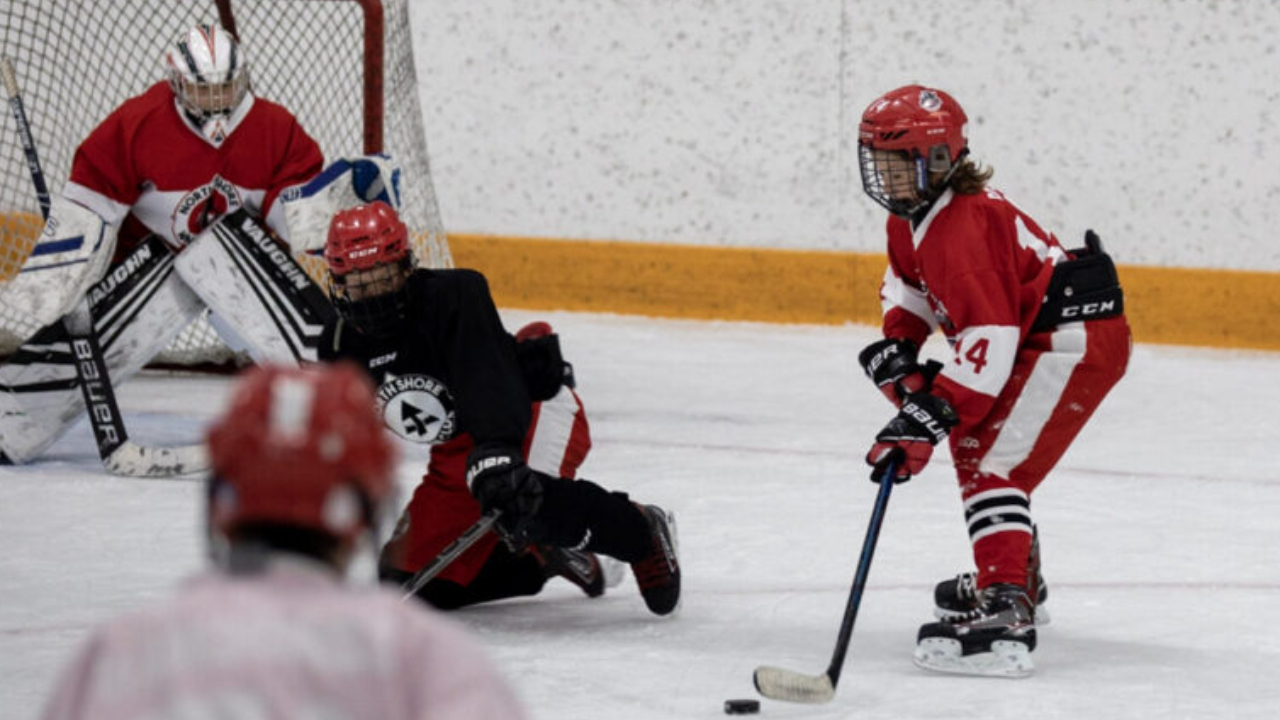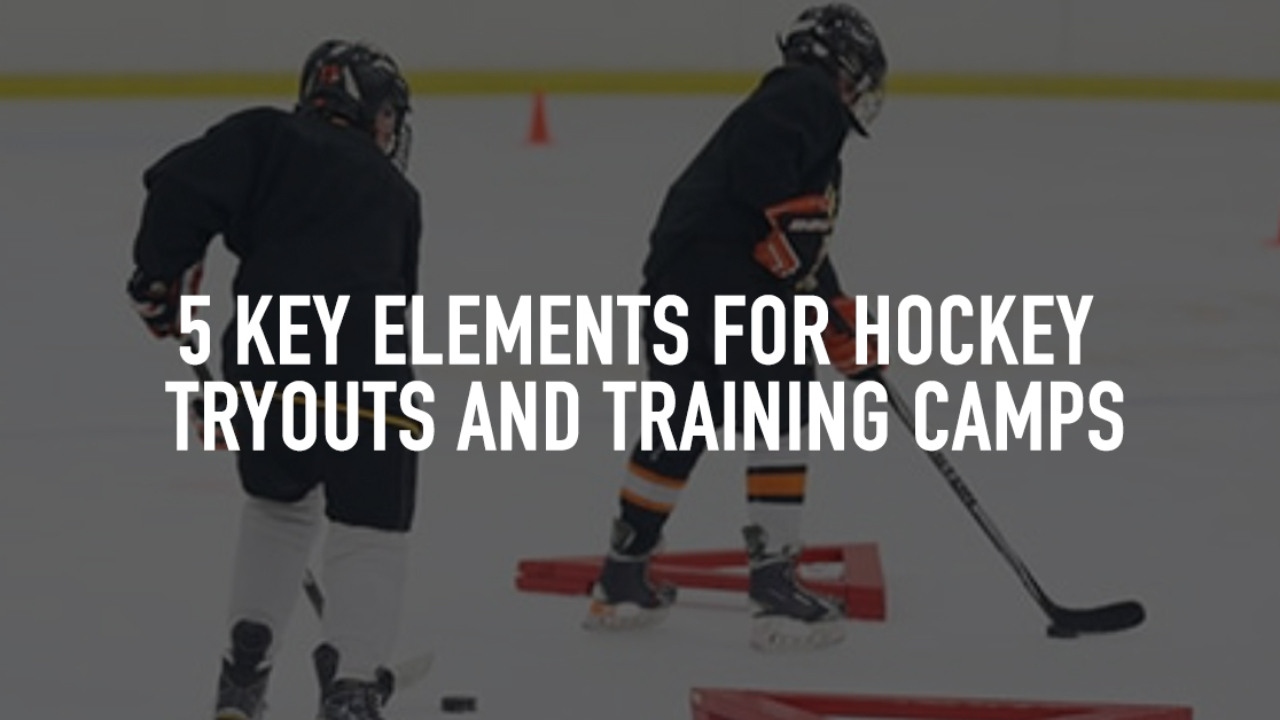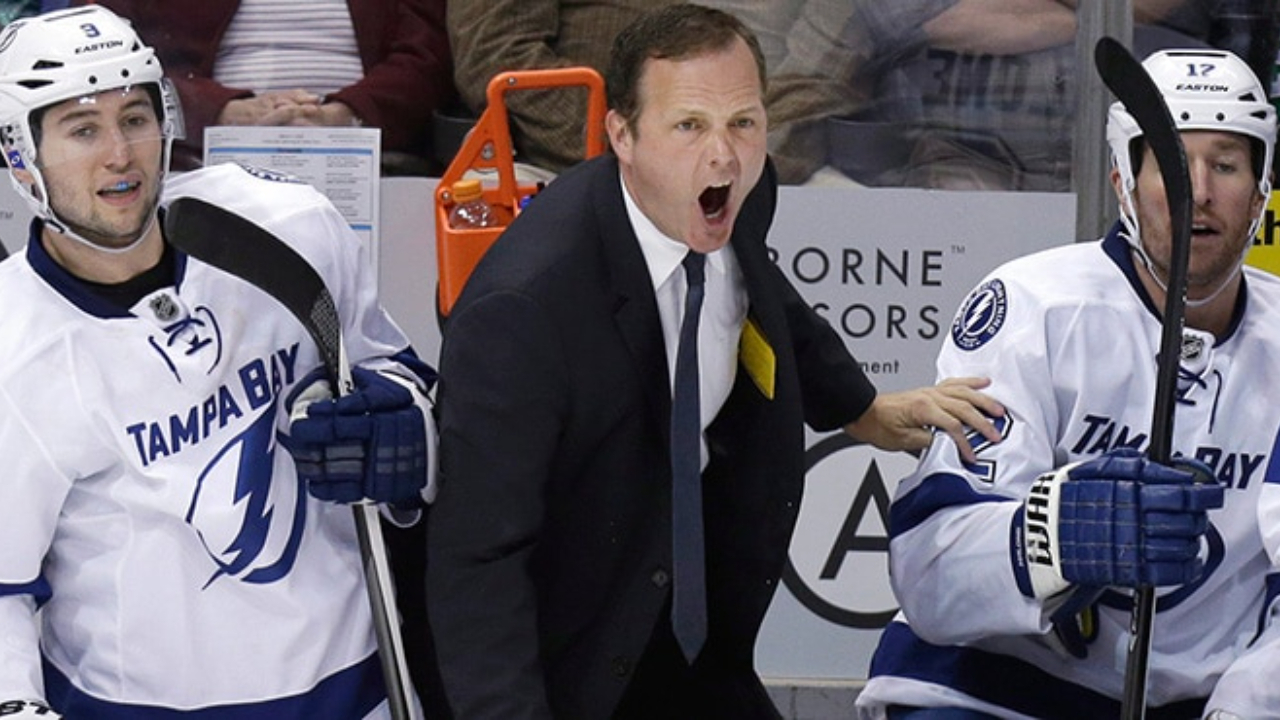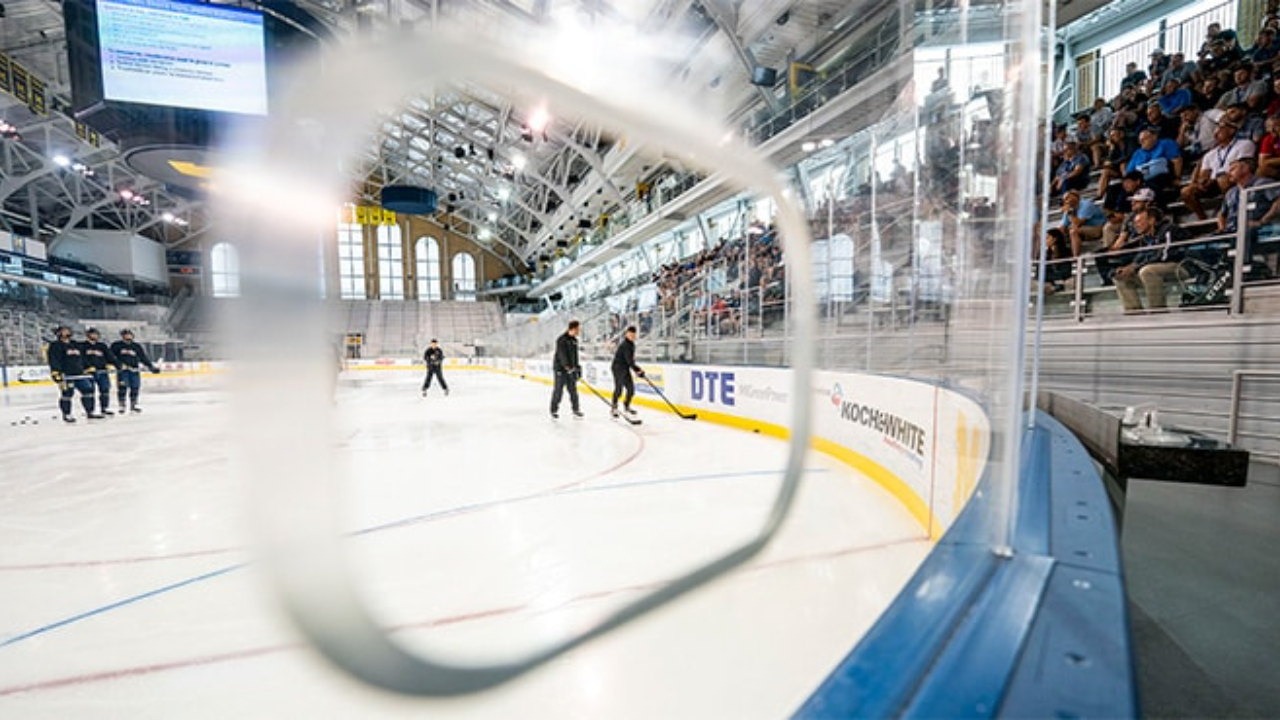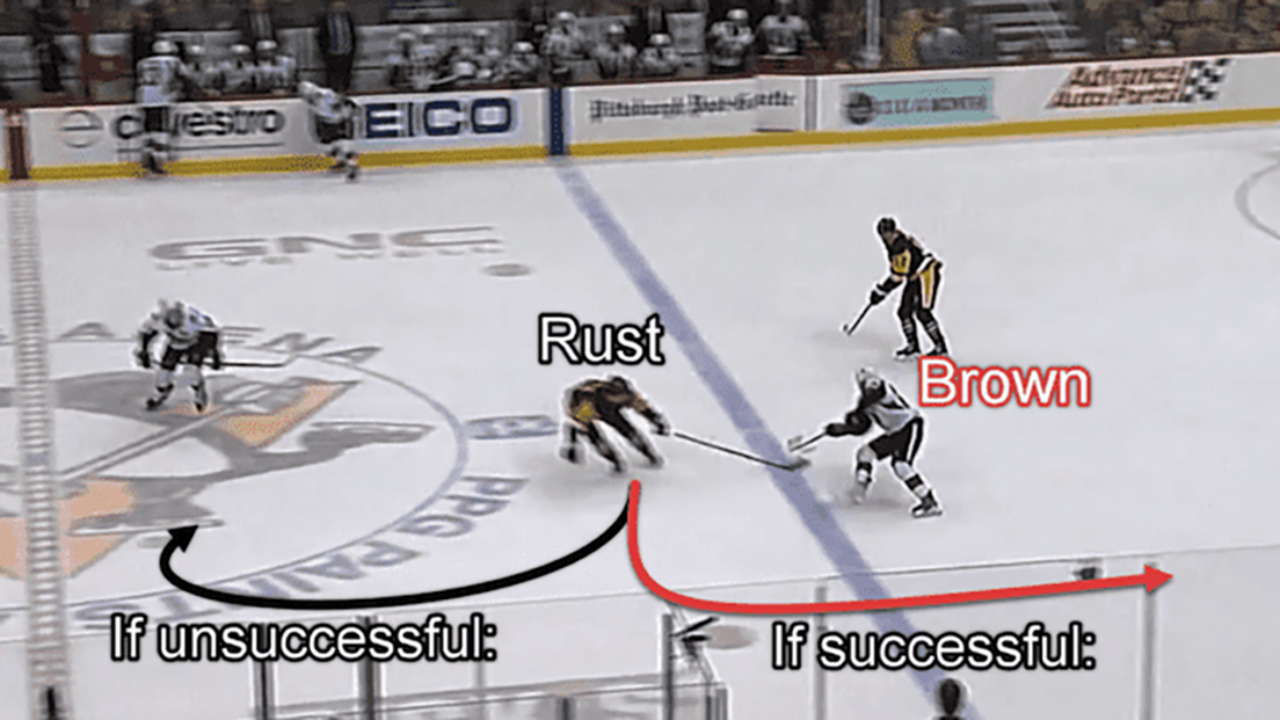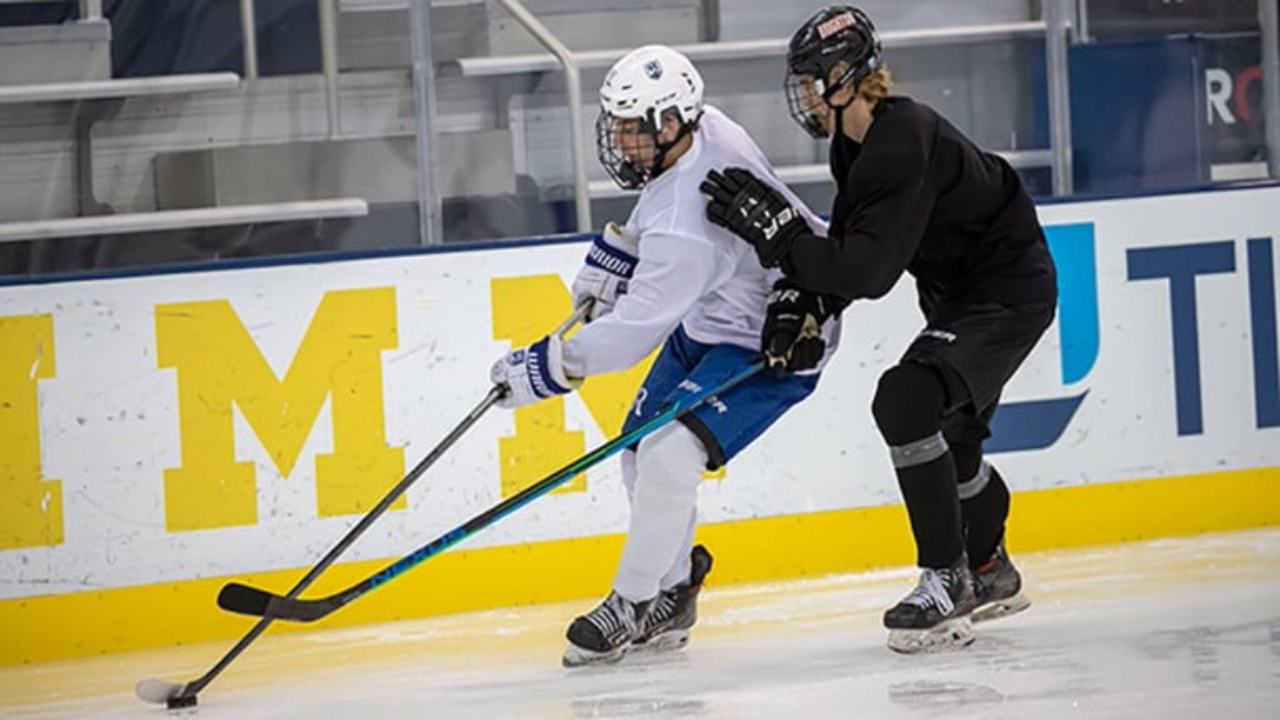
The world’s most famous soccer manager starts every training session with a variation of this.
As coaches, we enjoy drills that have many fast and quick puck touches. Those short feedback loops help foster development in our players’ skills and their levels of focus. Putting all of that in a competitive setting is a coach’s dream.
Let’s talk about a Rondo. At its simplest form, it’s a game of “monkey in the middle” where the players on the outside pass to keep possession while players in the middle attempt to create a turnover or deflect the puck outside of the game area.
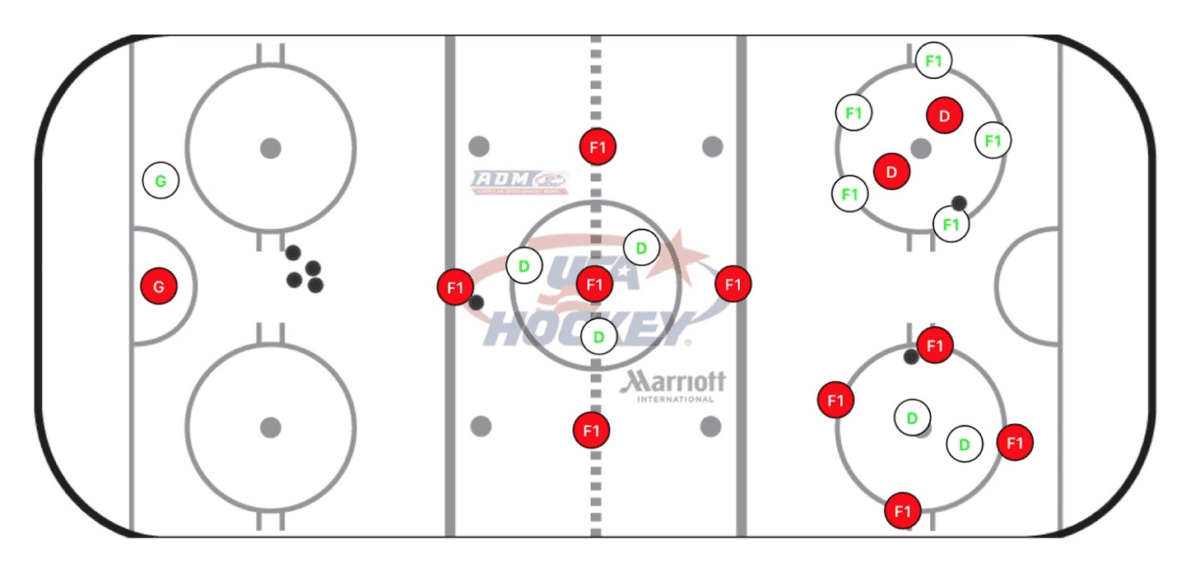
A basic rondo will be 4×2, 5×2 or 5×3 and looks like the image above.
The world’s most famous soccer manager Pep Guardiola starts every training session with a rondo. Why start with the same drill every day? Because it’s fundamental to how his team plays and how he develops his players.
What are we developing on offence?
1. Quick decision-making through ice awareness
Players have to assess options before the puck hits their stick in order to see success. As they gain a hold of the quick pace their perception of speed slows down and allows for better decisions.
2. Deception, manipulation creativity
Players will attempt to move the middle players and middle player’s sticks with deceptive eyes and body language.
3. Possession
Players build better body positioning when receiving and giving passes. They catch passes into positions where they can immediately protect and pass the puck.
4. Small area passing
Players are developing confidence in passing through and around defenders. They should be encouraged to use various passes that can be utilized in a game (Hooks, slips, saucers, one-touches, etc).
5. Timing and making small adjustments
Offensive passing players learn about timing and the benefit of drawing defenders towards themselves before passing. Pass receivers make shuffles in order to move into better passing lanes.
What are we developing on defence?
1. Dictating play (angling and stick positioning)
Defenders are able to realize and develop a confidence in dictating what the offence is given. They can force passes where they want them by using stick positioning and angling.
2. Working together
Players fit into roles and use those to work together. The first player plays the puck, takes away options, and allows his teammate(s) to read off of what options they are giving the offence.
3. Understanding rotations
As the puck quickly moves around, the defenders interchange roles and find how to effectively switch between them.
4. Desire to win the puck back and maintain possession
Players don’t like being in the middle and work hard to get out of there. They understand bad puck management leads to playing defence and promotes a greater focus on puck possession.
While rondo games work on many crucial skills, the plain fact is that rondos are a whole bunch of fun for the players. They’re competitive, full of energy, and bring out a lot of laughs. Players love to roast each other for turnovers, mistakes, and try to talk their way out of going into the middle.
Once your players master the basic rondo you can add in more wrinkles to challenge them:
- One touch passing only
- Offence player located in the middle bumper
- Include neutral players who switch teams based on possession
One of the greatest aspects of a rondo is that the drill runs itself. The player responsible for the puck being turned over or deflected outside of the game goes into the middle to defend and switches with the player who caught the pass or deflected the puck outside of the game.
Just watching your team’s rondo will give you great insights to your players. From there you can customize your coaching to their needs. A few common issues and thoughts on causes:
- Players with the puck backing away from the circle to provide themselves with more time and space, often caused by limited ice awareness.
- Having many deflected or stripped puck turnovers. This could be due to over-handling pucks or slow decision-making.
- Defenders feeling isolated due to fellow defenders struggling to read and react off their movement.
- Players fumbling one-touch pass receptions. This is often caused by a player losing focus once they give a pass.

